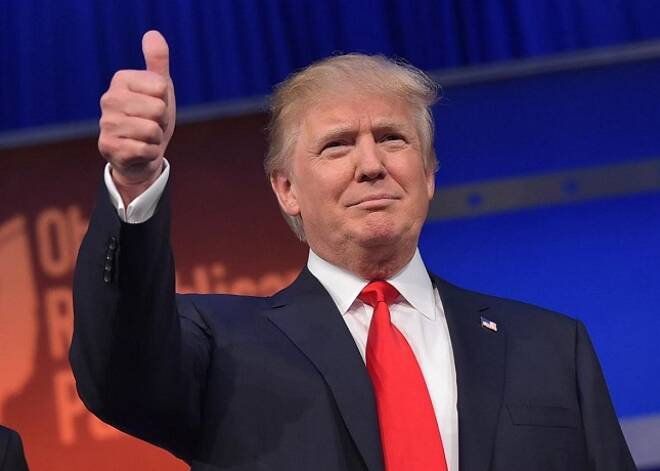Advertisement
Advertisement
U.S. Dollar Soars as Investors Bet on Trump and Inflation
By:
Last week’s election of Donald Trump as president of the United States helped drive the December U.S. Dollar Index to its highest level in more than nine
Last week’s election of Donald Trump as president of the United States helped drive the December U.S. Dollar Index to its highest level in more than nine months as investors speculated that his proposed economic plans and policies would lead to increased U.S. inflation.
His plans which include the renegotiation of free-trade deals and large fiscal stimulus measure are expected to boost U.S. inflation which will also lead to more frequent interest rate increases by the U.S. Federal Reserve.
Trump’s victory initially caused uncertainty in the markets while driving the U.S. Dollar sharply lower on November 8. The Greenback, however, began to rise rapidly shortly thereafter as the financial markets calmed and investors reassessed his economic plans.
The yield on the 30-year Treasury Bond traded at 2.917, hitting its highest level since January 12. The yield on the benchmark 10-year Treasury Note was also higher, at 2.106 percent. The rising yields helped make the U.S. Dollar a more attractive investment.
December U.S. Dollar Index futures finished the week at 99.05, up 1.962 or +2.02%.
Emerging Market Currencies
While Trump’s plans and policies helped increase demand for U.S. assets, it also put pressure on emerging market stocks and debt instruments.
Trump’s policy proposals which include the possible renegotiation of trade deals with China or the possible tariffs on Chinese goods, helped drive the Dollar/Yuan to its highest level in six years. China fixed the Yuan at 6.8120 while the offshore rate reached as high as 6.8491 before settling at 6.8208.
The Mexican Peso sank to a record low of 21.395 per dollar last week with most of the loss taking place on election night when the Peso dropped more than 10 percent against the U.S. Dollar. The heavy selling against the Peso was related to Trump’s controversial immigration policy.
The Brazilian Real and South African Rand were also under pressure because of rising demand for U.S. assets. The Brazilian Central Bank was actually forced to take intervention measures.
Funding Currencies
The EUR/USD closed at 1.0852, down 0.0288 or -2.58% and the USD/JPY finished at 106.615, up 3.552 or +3.45%. Both the Euro Zone and Japan have negative interest rates. Therefore, rising U.S. Treasury yields helped increase the interest rate differential between German Bunds and Japanese Government Bonds. This made the U.S. Dollar a more attractive asset.
Furthermore, because of the negative yields, the Euro and the Japanese Yen are both considered funding currencies. U.S. stock investors take loans in the local currency and buy U.S. Dollars to invest, pressuring the Euro and the Yen. We saw this last week as the U.S. stock markets posted spectacular gains, driving the two funding currencies sharply lower.
About the Author
James Hyerczykauthor
James is a Florida-based technical analyst, market researcher, educator and trader with 35+ years of experience. He is an expert in the area of patterns, price and time analysis as it applies to futures, Forex, and stocks.
Did you find this article useful?
Latest news and analysis
Advertisement
